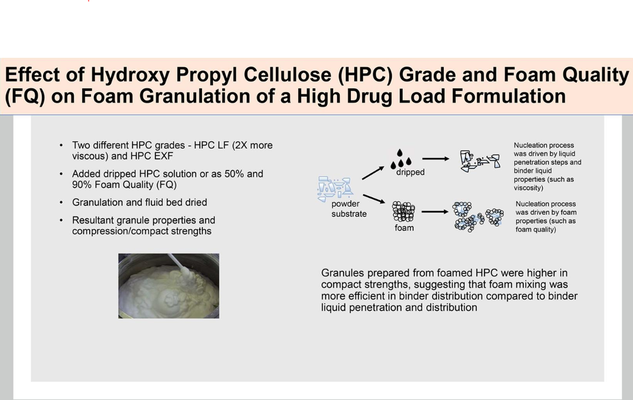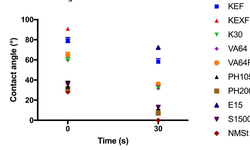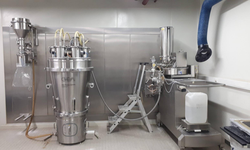Scientific papers
Foam granulation presents a relatively novel approach to wet granulation, where foamed binder solutions are introduced to powder mixtures in the mixer. This serves to mitigate issues of localized over-wetting commonly encountered in traditional wet granulation processes. This particular study marks the first attempt to explore how the quality of binder and foam impacts the foam granulation process and the properties of granules, especially in formulations with a high drug load.
The investigation involved the addition of two different grades of Hydroxypropyl cellulose (HPC), namely HPC LF (twice as viscous) and HPC EXF, both at a consistent 7.4%w/w solution concentration. Additionally, varying foam qualities at 50% and 90%, along with a method where the binder solution was dripped, were incorporated into a formulation with a high drug load (81%w/w) for wet granulation.
The resulting granules underwent assessment for compactibility and the strength of the compacts formed. It was observed that a foam quality of 50% with either HPC LF or HPC EXF led to the lowest impeller power readings and water activity compared to 90% foam quality or the dripped HPC solution method. Granules produced with a 50% foam quality displayed characteristics such as smaller size, broader size distribution, and increased specific surface area, ultimately resulting in enhanced compactibility.
Although granules prepared with different foamed HPC grades didn't exhibit significant differences in compression behavior, they demonstrated higher compact strengths. This suggests that foam mixing was more effective in uniformly distributing the binder compared to the penetration and distribution achieved with liquid binders.

Comments
No comments posted yet.
Add a comment















